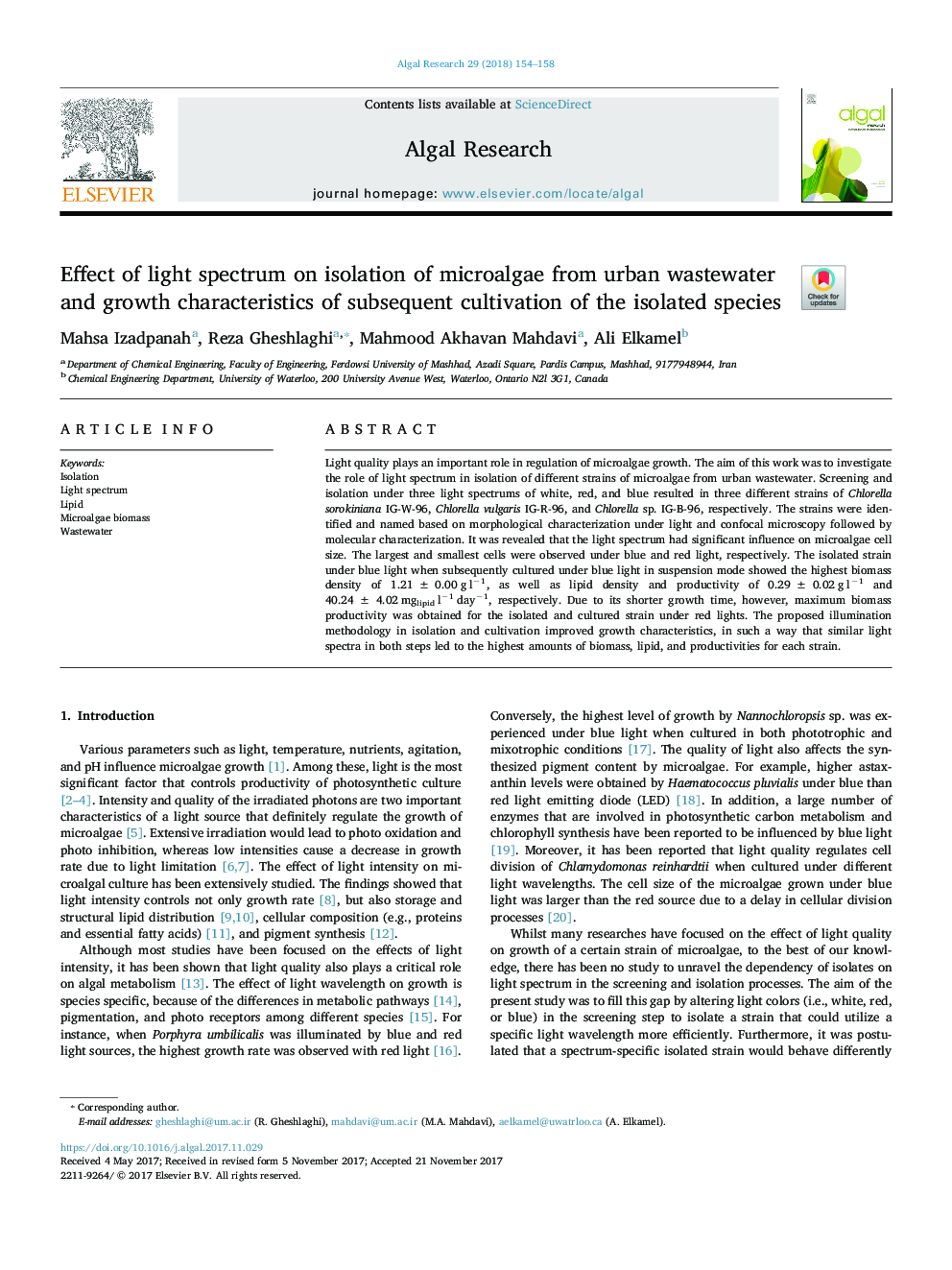| Article ID | Journal | Published Year | Pages | File Type |
|---|---|---|---|---|
| 8086246 | Algal Research | 2018 | 5 Pages |
Abstract
Light quality plays an important role in regulation of microalgae growth. The aim of this work was to investigate the role of light spectrum in isolation of different strains of microalgae from urban wastewater. Screening and isolation under three light spectrums of white, red, and blue resulted in three different strains of Chlorella sorokiniana IG-W-96, Chlorella vulgaris IG-R-96, and Chlorella sp. IG-B-96, respectively. The strains were identified and named based on morphological characterization under light and confocal microscopy followed by molecular characterization. It was revealed that the light spectrum had significant influence on microalgae cell size. The largest and smallest cells were observed under blue and red light, respectively. The isolated strain under blue light when subsequently cultured under blue light in suspension mode showed the highest biomass density of 1.21 ± 0.00 g lâ1, as well as lipid density and productivity of 0.29 ± 0.02 g lâ1 and 40.24 ± 4.02 mglipid lâ1 dayâ1, respectively. Due to its shorter growth time, however, maximum biomass productivity was obtained for the isolated and cultured strain under red lights. The proposed illumination methodology in isolation and cultivation improved growth characteristics, in such a way that similar light spectra in both steps led to the highest amounts of biomass, lipid, and productivities for each strain.
Related Topics
Physical Sciences and Engineering
Energy
Renewable Energy, Sustainability and the Environment
Authors
Mahsa Izadpanah, Reza Gheshlaghi, Mahmood Akhavan Mahdavi, Ali Elkamel,
